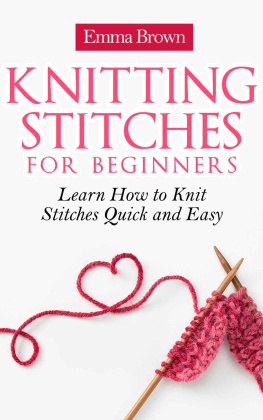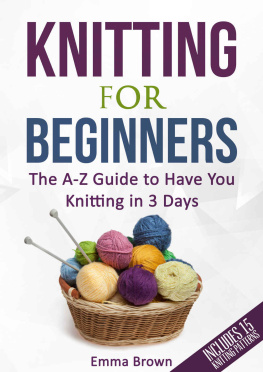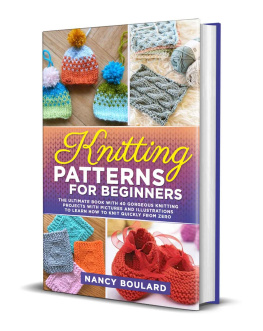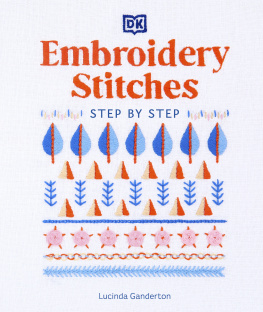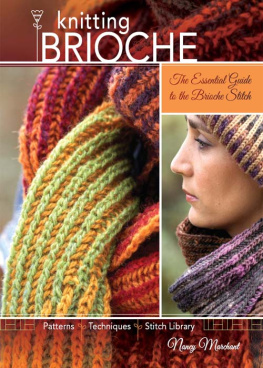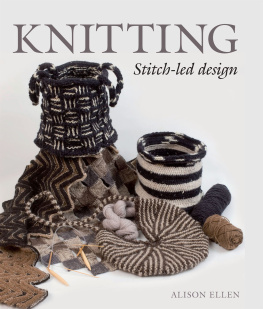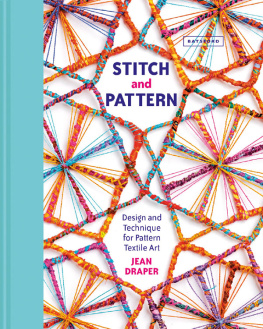Try a thing you havent tried before three times
once to get over the fear,
once to find out how to do it,
and a third time to find out whether you like it or not.
Virgil Thomson, American composer and critic, 1896-1989
Cover Photos
Front cover, top left: Medieval sock from Uppsala, Sweden (Cat. No. M 05),
Foto Upplandsmuseet, UM11107
Front cover, top center: Sun hats nalbound from dyed raffia in Oslo stitch (ucb)
Front cover, top right: Mammen stitch being worked (ucb)
Front cover, center: Nalbinding needle made from antler (ucb)
Ulrike Claen-Bttner
Nalbinding What in the World Is That?
History and Technique of an Almost Forgotten Handicraft
Bibliografische Information der Deutschen Nationalbibliothek
Die Deutsche Nationalbibliothek verzeichnet diese Publikation in der Deutschen Nationalbibliografie; detaillierte bibliografische Daten sind im Internet ber dnb.d-nb.de aufrufbar.
Herstellung und Verlag:
BoD Books on Demand GmbH, Norderstedt
ISBN 978-3-7392-6952-8
Ulrike Claen-Bttner, Wiehl 2015
Contents
Preface
In its core this book goes back to a leaflet I wrote for the participants in my nalbinding workshops. It contained a brief historical and technical introduction, as well as instructions for the Oslo stitch.
Nalbinding What in the World Is That? History and Technique of an Almost Forgotten Handicraft is a theoretical and practical introduction to the technique of nalbinding. It will enable its reader not only to learn nalbinding, but also to recognize and rework different stitches or to design new ones. Using the bibliography, further historical investigations can easily be made.
This book was first published in German, as I live in Germany and there was a lack of German nalbinding literature at the time. Since I found out that many people who dont read German were interested in my book - or even bought it just for the pictures - I started playing with the idea of translating it. And after finding some people who helped and encouraged me this year, I did just that: And here it is!
Books with nalbinding instructions in English and most Scandinavian languages have already been available for some decades, for example, those by Marta Brodn (1973), Helga Steffensen (1975), Berit Westman (1983), Larry Schmitt (1994, 1995, 1997, 2000), Sigrid Briansdotter (2000, 2004), Linnea Rothquist Ericsson et al. (2003), Nusse Mellgren (2005), and sa and Mia Hoeij (2008).
The internet is a great help in finding information about nalbinding. It is worthwhile to enter some of the names by which nalbinding is known in a search engine; these include naalbinding, nalbindning, looping, needle binding, nadelbinden, or neulakinnas. Not only information, videos, and instructions can be found, but also many photos of modern and (pre-)historic nalbinding works that may inspire the readers own creations.
All instructions in this book are written for right-handers. Since most left-handers are practiced in rethinking right-hand instructions, or mirroring images, I hope this will cause no problems.
The growing interest in nalbinding emanates mainly from the living history and reenactment scene. The term nalbinding (needle-binding) has become accepted internationally, especially for crafters who see themselves in the Scandinavian tradition. The word nalbinding is based on the traditional Scandinavian names for this technique. In other parts of the world the term looping is often used, which actually describes the working process more accurately. Loops are always the basic construction feature of nalbinding, which can be done without a needle if necessary. Nevertheless, I will stick to the word nalbinding, simply because it has already become very popular in Europe. So in this book the term nalbinding is used for all types of fabric production in which loops are interconnected with each other no matter if this is done with or without the aid of a needle.
Since in Scandinavia the technique of nalbinding has been handed down in an unbroken tradition until today, there are many archaeological and historical finds from this region. Stitches known from Scandinavia frequently cover several loops; but less complex stitches, such as single or twisted looping, are used there as well. The latter are also widely used in many other parts of the world.
The pictures in the English version of this book differ somewhat from those in the German version: some have been added, and some removed. This is due to copyright reasons. All missing pictures can be found on the internet (the links are available at www.nalbinding.info).
Before we delve into the world of nalbinding, I would like to thank everyone who contributed to the success of this book, be it for trying out the instructions, or for translating, proofreading, advice, discussions, suggestions, information, providing images, babysitting and much more. I cannot name everyone, but special thanks go to the following people and institutions:
My husband Erich Classen, my parents Rita and Manfred Bttner, Bernhard Dankbar, Anne Marie Decker, Brigitte Dreyspring, Marianne Guckelsberger and Vera Udodenko, Rita Heyen, Larry Schmitt, Sanna-Mari Tonteri, Rebecca Weber, Dipali Dutta-Quaer, and all members of the German and American nalbinding Facebook and Yahoo groups, who are always keen to debate.
As my English is far from being perfect, this version of the book would not have been possible or at least dreadful for anyone to read without the help of native speakers. Some I have already mentioned above, but I want to give a really special thanks to Karen M. P. Carlson, who escorted me through the whole book, word by word.
I am also much obliged to the following institutions: Tuch+Technik Textilmuseum Neumnster; Archologisches Landesmuseum / Stiftung Schleswig-Holsteinische Landesmuseen Schlo Gottorf; National-museet / The National Museum of Denmark; National Museum of Iceland; Nordiska museet; Museum of Cultural History / University of Oslo; Petrie Museum of Egyptian Archaeology / University College London; Sydvestjyske Museer Ribe; Historisches Museum der Pfalz / Domschatzkammer Speyer; Amt fr kirchliche Denkmalpflege Trier; Upplandsmuseet Uppsala; Vesterheim Norwegian-American Museum; Victoria and Albert Museum London; York Archaeological Trust; Universittsbibliothek of Eichsttt.
The copyright information for every picture can be found in the captions. The abbreviation (ucb) indicates pictures owned by the author.
Finally, I would like to thank my children for their patience, when they wanted to play with their mother and she could not tear herself away from her computer.
Fig.1: Detail of a delicate bilum, a traditionally crafted bag from Papua New Guinea; 21st century (ucb).
Fig.2: Nalbound mitten from medieval Schleswig.
Stiftung Schleswig-Holsteinische Landesmuseen Schloss Gottorf, Schleswig
I. History and Technique of Nalbinding
What is Nalbinding?
Nalbinding is a textile technique usually performed with a needle and thread, in which loops are connected to form an elastic fabric. Textiles or basketry of various kinds can be made, ranging from extremely fine to very coarse.
Someone working with needle and thread these days is usually making seams or hems, is doing embroidery, or is mending. Thus pieces of cloth are being connected, neatened, decorated, or repaired. In contrast to these techniques nalbinding creates new cloth. This method of producing textiles is still common in almost all parts of the world. Nalbinding creates flexible fabrics, so it is often used to produce caps, footwear, or gloves, as well as carrying bags, nets, strainers, and other everyday objects.


